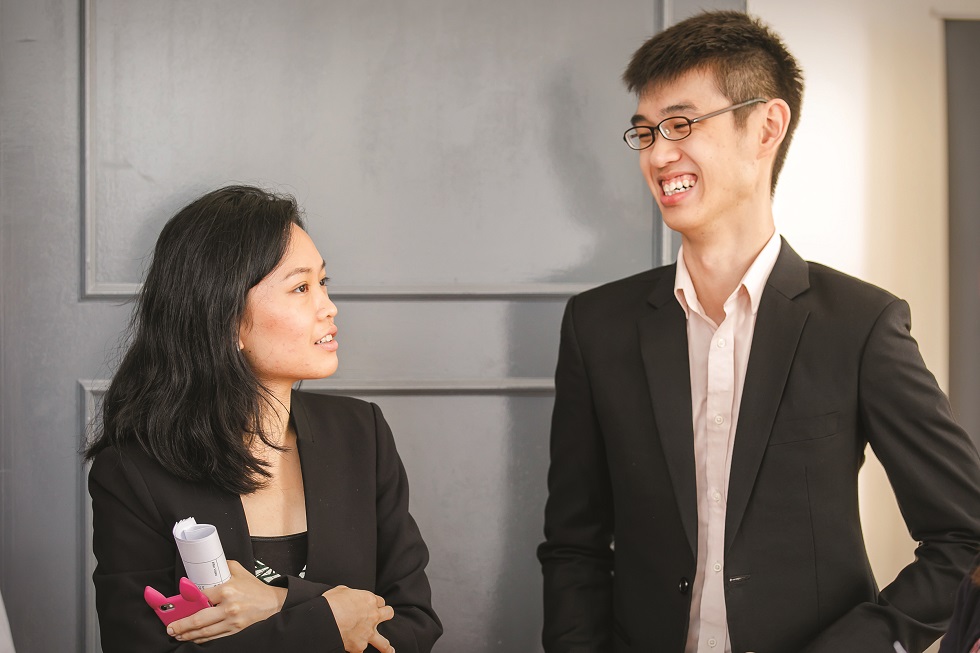By Zhizhen | Clearwisdom.net
Aixin-Juelo Xuanye, whose title during his reign was Emperor Kangxi (1654-1722 AD), acceded to the Qing Dynasty imperial throne at the age of eight and ruled for 61 years. The name “Kangxi (康熙)”, which is a combination of the Chinese characters ‘health’ and ‘prosperity’, was derived from the proverb, “Thousands of civilians living in health and peace, prosperity and abundance.”
The way to end a rebellion is to be forgiving, generous, and noble. We can win people’s hearts through leniency.
Emperor Kangxi
Emperor Kangxi was a responsible and compassionate ruler, with a resolve to build a strong country. During his reign, China became the world’s largest and strongest nation. Kangxi established the “Prosperous Era of Kangxi and Qianlong” and was one of the few wise and outstanding rulers in Chinese history.
Quelling Strife and Chaos
When Emperor Kangxi assumed leadership at the age of 16, China was wrought with internal strife and suffered many foreign invasions. The country was fragmented, the people were in misery, and many railed against the imperial court.
Despite his young age, Emperor Kangxi already possessed extraordinary wisdom and courage. His first action was to depose of the despotic and authoritarian regent, Oboi. He then ended the Revolt of the Three Feudatories, twice subdued the Dzungar Mongols, halted the Russian invasion at the northern border, unified China, and founded the country’s capital.
Galdan is an oppressor and violent, but I treat him with tolerance and mercy. Galdan is cunning and sly, but I show him honesty and trust.
Emperor Kangxi
Kangxi’s approach to quelling strife was one of firmness and yet benevolence. “The way to end a rebellion is to be forgiving, generous, and noble,” he said to his ministers. “We can win people’s hearts through leniency. To rule a nation, one needs to be tolerant.”
One of the young emperor’s greatest challenges was stopping the Revolt of the Three Feudatories (1673–1681 AD), a rebellion led by the three lords of the fiefdoms in Yunnan, Guangdong and Fujian provinces. During negotiations to halt the rebellion, the young Kangxi told the lords firmly that the nation’s territory was inviolate. He asked them to keep the nation’s interests in mind and end the revolt. In return, he would grant them clemency. After the rebellion was ended, he treated everyone involved with leniency so as to keep losses to a minimum.
At the height of the revolt, Wu Sangui, the lord of Yunnan and Guizhou, bribed Wang Fuchen, the commander-in-chief of Shaanxi Province, to join the rebellion. Wang joined the revolt, bringing despair to the Sichuan and Shaanxi Provinces.
At the time, Wang Fuchen’s son, Wang Jizhen resided in the capital. Kangxi’s ministers suggested he immediately arrest Wang Jizhen for his family’s involvement in the rebellion. But Kangxi instead allowed Wang Jizhen to visit his father and persuade him to withdraw from the rebellion, in return for clemency by the imperial court.
Wang Fuchen was deeply impressed by Kangxi’s benevolence. In response, he and his troops paid the highest respect in the empire — they kowtowed to the capital in the north. But Wang did not surrender due to fear.
Emperor Kangxi then sent his military general, Tu Hai, to quell Wang’s revolt, with the directive that no one may kill mercilessly. Tu Hai’s troops were too strong for Wang’s army, and Wang had no choice but to surrender.
After Wang surrendered, Kangxi gave him the title of “Pacifying General” and directed him to help Tu Hai guard Central China. Although Wang Fuchen felt deep shame and regret for his actions, Kangxi asked Tu Hai to encourage him.
In governing Mongolia, Kangxi adopted the policy of “encouraging people”. One of the tribal leaders of Khalkha Mongol (Outer Mongolia), Tosheetu Khan, was a poor leader and created much internal chaos in his region. This allowed the Dzungar Khan Galdan to successfully invade Khalka land, and forced Tosheetu Khan and his people to move south.
At a conference with the Mongol tribal leaders, Kangxi reprimanded Tosheetu Khan for his remission. He later told others, “I was supposed to punish Tosheetu Khan severely during the conference, but I did not have the heart. Therefore, I granted him clemency and forgave his blunders in everyone’s presence.”
At a conference with the Mongol tribal leaders, Kangxi reprimanded Tosheetu Khan for his remission. He later told others, “I was supposed to punish Tosheetu Khan severely during the conference, but I did not have the heart. Therefore, I granted him clemency and forgave his blunders in everyone’s presence.”
Kangxi resolved strife amongst the Mongolian tribes with diplomacy, providing instruction and guidance. He successfully reunified the Khalkha Mongols, who came to deeply respect the emperor. They voluntarily submitted to Kangxi as subjects of his empire, acknowledging his leadership.

When a nation chooses its official, a person’s morality, fairness, and generosity of spirit come first, and his talents and skills come second.
Emperor Kangxi
After Galdan was defeated, Kangxi said to his ministers, “To rule a nation, one should treat people with benevolence. One should not use coercion. Galdan is an oppressor and violent, but I treated him with tolerance and mercy. Galdan is cunning and sly, but I showed him honesty and trust.”
Kangxi’s ministers pleaded with the Emperor to accept an honorific title, but Kangxi refused and said, “People have experienced the wrath of war and have lived under distressing conditions. I have to attend to their needs and not accept impractical titles.”
Appointing Ministers by Virtue
Emperor Kangxi loved his people and made them his topmost priority. He was constantly mindful of them and their hardships. During his rule, he constantly developed principles and policies that benefited the people.
Kangxi was intent on restoring and expanding productivity based on people’s abilities and life cycles and reproduction cycles. He forbade the seizure and occupation of people’s lands, and waived grain taxes 545 times at a cost of 1.5 billion silver taels. He also froze the “population tax” to lessen the financial burden on farmers.
Kangxi studied and investigated river management for over ten years, and placed emphasis on controlling the Yellow River’s floods. Mindful of the people’s distress, he reduced the damage and suffering brought by the flooding.
At one time, a part of the Great Wall in the Gubeikou area collapsed. When the ministry of public works were discussing the reconstruction project, Kangxi told the senior engineers, “When an emperor rules a nation, he relies on internal sources and does not solely depend on barricades. The Great Wall was built during the Qin Dynasty and constantly repaired during the Han, Tang, and Song Dynasties. Yet, this did not prevent foreign invasions. At the end of the Ming Dynasty, my ancestor led his army through it, destroying any obstruction. No one could stop them!
The crime of a corrupt official is unlike any other crimes, so I must not be lenient. Otherwise, it would not serve as a deterrent.
Emperor Kangxi
“Therefore, defending a nation requires one to cultivate one’s virtue and treat the people respectfully. When people are happy, the nation is in harmony and the frontiers are fortified. My thoughts concerning this are clearly represented by the proverb, ‘Unity of the people under the same purpose is a formidable force.’”
Emperor Kangxi directed that all officials should treat people the same way they wanted themselves to be treated. When selecting people for government positions, he held to very strict and high selection criteria.
Kangxi used the following principle when selecting officials: “When a nation chooses its official, a person’s morality, fairness, and generosity of spirit come first, and his talents and skills come second. It would be ideal if the person possessed virtue and talent. However, it is more important that he possesses virtue as opposed to talent.
“A person’s talent must be based on his virtues. Therefore, when he possesses more virtue than talent, he is a true gentleman. If he possesses more talent than virtue, he is a spiteful man.”
Being of Manchu descent, Kangxi was cognisant of the tension between the Manchus and the Hans. To reassure the Han officials, Kangxi told them repeatedly, “The Manchus and the Hans are my ministers. The Manchus and the Hans are one body. All officials, regardless of position, are my trusted aids. Every official must be cautious, submit written reports, and must not avoid responsibilities.”
Kangxi’s impartiality attracted many great talents to serve in his government. The barrier between the Manchus, Hans, and other ethnic groups gradually disintegrated and they all lived in harmony.
To show his determination to rule by Confucian philosophy, Kangxi personally wrote the Chinese characters “wan shi shi biao (万世师表)î (meaning “Confucius – a Paragon for All Generations”) and hung it in the palace.
To foster an honest and upright environment among government officials, Kangxi issued imperial orders soliciting advice from officials throughout the government. He personally honoured officials who were honest and righteous. During his reign, there were many upright and effective officials, such as Tang Bin, Li Guangdi, and Zhang Boxing.
Kangxi paid particular attention to punishing corrupt officials. He once said, “The crime of a corrupt official is unlike any other crimes, so I must not be lenient. Otherwise, it would not serve as a deterrent.”
Between 1681 and 1701, Kangxi punished 26 corrupt provincial viceroys and governors. Kangxi himself held court hearings against corrupt officials, to serve as a warning to others. He was even stricter with provincial governors. For example, Mu Ersai, the governor of Shanxi Province, was sentenced to death for taking bribes.
Kangxi explained that if severe punishment was not used when such crimes were committed, an honest and disciplined government could not be enforced.
Self-Discipline and Virtue in Daily Life
Despite his Manchurian descent, Kangxi embraced and followed the Confucianism and Daoism of the Han culture.
When Kangxi first assumed leadership at age 16, he and his officials held a grand ceremony at the imperial college to honour Confucius. During his first inspection tour of the South, he visited the Confucian temple in Qu Fu, Shandong Province and paid his respects to Confucius.
To show his determination to rule by Confucian philosophy, Kangxi personally wrote the Chinese characters “wan shi shi biao (万世师表)” (meaning “Confucius — a Paragon for All Generations”) and hung it in the palace.
Kangxi also praised Zhu Xi, the Song Dynasty philosopher and politician who made Confucianism the core of ancient Chinese education for many centuries. Han scholars and Confucian scholars were deeply moved. They said, “Your Majesty deeply honours Confucius as his teacher. This indicates that Your Majesty is wise, extraordinary, and noble. You are like a Han Chinese Emperor, and are not from a foreign race from the north nor a head of a barbarian tribe. You are truly an Emperor mandated from heaven! We have been studying the books from the sages diligently. Now is the time for us to serve our country diligently.”
Kangxi had a strong sense of self-discipline. He began studying from the age of five, and studied day and night, winter and summer. He even forgot to eat and sleep. He loved calligraphy and wrote over a thousand characters a day.
During inspection tours, whether on a boat or living away from the palace, Kangxi was always reading, composing poems, or writing essays. Even at the age of 60, he read constantly. He was well versed in literature, history, geography, mathematics, medicine, and many other disciplines. He was admired by scholars for his deep knowledge.
Kangxi directed scholars to compile The History of Ming, The Complete Book of Tang Poetry, and the Kangxi Dictionary, which became treasured Chinese historical texts. From the day he assumed leadership until he died, he insisted on going to the imperial palace gates and listening to administrative reports from the ministers. He administered state affairs almost daily, except on days when he was ill, when the nation celebrated the three important holidays, or when there was an unexpected crisis.
Kangxi promoted frugality, and dressed and ate simply in his day-to-day life. Joachim Bouvet, a Frenchman who visited China, wrote to the King of France, “Kangxi’s indifference to worldly gain and his plain and simple lifestyle are unprecedented in history. He eats two meals a day, which are very simple. He wears the most ordinary clothing.
“On rainy days we sometimes see him wearing a felt jacket, which is considered plain and coarse clothing in China. During the summer, he wears an ordinary linen short coat, which is also worn by ordinary people. Except during holidays and special ceremonies, the only luxurious item he wears is a large bead, which is what Manchus wear on their hats in summer.
“He does not have any extravagant desires. His indifference to worldly gain is unimaginable, and it is reflected in the clothes he wears and in his lifestyle.”
He does not have any extravagant desires. His indifference to worldly gain is unimaginable, and it is reflected in the clothes he wears and in his lifestyle.

He does not have any extravagant desires. His indifference to worldly gain is unimaginable, and it is reflected in the clothes he wears and in his lifestyle.
Joachim Bouvet, in a letter to the King of France on Emperor Kangxi
Kangxi was also very filial and respectful to his mother and grandmother. Not only did he visit them at Cining Palace every day to pay his respects, but when the Grand Dowager Empress fell ill, he walked several times to the Altar of Heaven to pray for longer health for her at the expense of his own.
After the Grand Dowager Empress died, Kangxi was extremely saddened. He personally placed his grandmother’s body in the coffin, and cut his own hair and wore mourning clothes. He also spent many days outside Cining Palace. On Chinese New Year’s Eve, his ministers pleaded with him to return to his palace, but he refused.
Later, he continued to visit Cining Palace every day where every item reminded him of his grandmother. When he was 16, he issued the “Sacred Edict of the Kangxi Emperor”, which consisted of 16 maxims on the basic principles of Confucian orthodoxy. Of the 16 maxims, filial piety was listed as the first.
Throughout Chinese history, nearly all rulers have declared their intent to practice benevolence and filial piety. But how many of them were truly “benevolent” and “filial?” Many like Emperor Jie of the Xia Dynasty and Emperor Zhou of the Shang Dynasty believed themselves to be good rulers, but were actually tyrants.
Kangxi served the people well and practiced what he preached. From the way he governed the nation, we can see integrity and true virtue in everything he did.
















